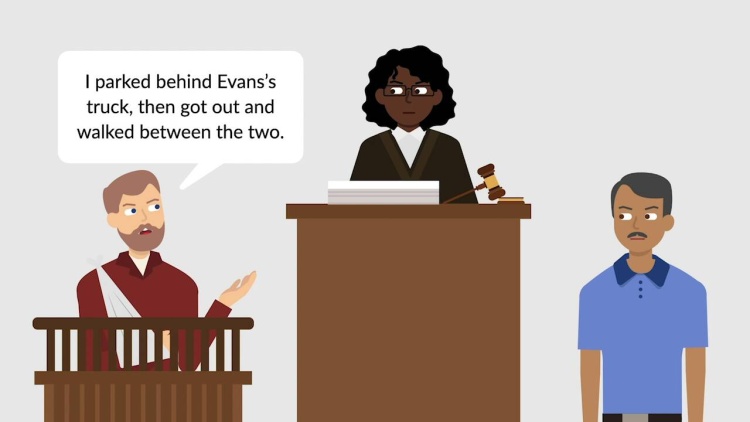Martin v. Evans
Supreme Court of Pennsylvania
711 A.2d 458 (1998)

- Written by Denise McGimsey, JD
Facts
Weldon Evans (defendant), a truck driver for the FORC Company (defendant), pulled into a rest stop and parked his 45-foot-long tractor-trailer in what appeared to be the last parking space in a row. When he returned from the restroom, no one was parked behind him. He climbed into the cab and took approximately two minutes to make an entry in his logbook. The events that followed were disputed by witnesses. Evans claimed that he prepared to put the truck in reverse by releasing the brakes, which emitted a hissing sound, and activating the flashers. Due to the angle and length of the vehicle, Evans could not see behind him. He proceeded to back up more slowly than walking speed when he felt something. He saw someone waving his arms to stop, then saw a man fall to the ground. Apparently, a box truck driven by either Anthony Martin (plaintiff) or Rochester Steverson had pulled up behind Evans’s vehicle. Martin did not have a valid driver’s license, and it was disputed as to whether the men had pulled into a legal parking space. Martin was apparently standing or walking behind Evans’s vehicle when it began to reverse, pinning him against the box truck. There were conflicting accounts as to whether Martin was paying attention at the time. Steverson backed up the truck and Martin fell to the ground, injuring his arm and back. Martin claimed that he had neither heard nor seen any indication that Evans was about to back up. He sued Evans and FORC in a Pennsylvania court for negligence. The jury found in favor of defendants. The trial court granted a new trial on the ground that the jury’s decision went against the weight of the evidence. An appellate court affirmed. Defendants appealed.
Rule of Law
Issue
Holding and Reasoning (Newman, J.)
What to do next…
Here's why 899,000 law students have relied on our case briefs:
- Written by law professors and practitioners, not other law students. 47,000 briefs, keyed to 994 casebooks. Top-notch customer support.
- The right amount of information, includes the facts, issues, rule of law, holding and reasoning, and any concurrences and dissents.
- Access in your classes, works on your mobile and tablet. Massive library of related video lessons and high quality multiple-choice questions.
- Easy to use, uniform format for every case brief. Written in plain English, not in legalese. Our briefs summarize and simplify; they don’t just repeat the court’s language.






